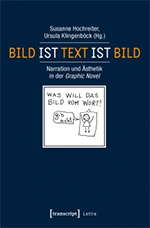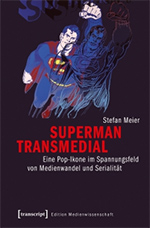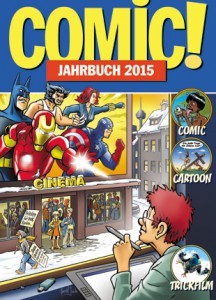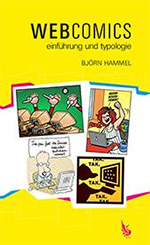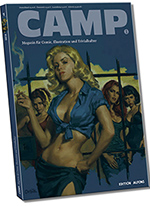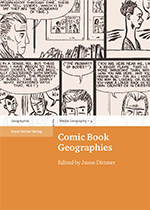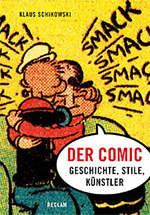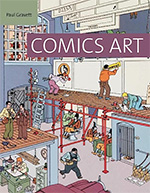Im Monitor werden in unregelmäßigen Abständen aktuelle Publikationen kurz vorgestellt, die für die Comicforschung relevant sein könnten. Die kurzen Ankündigungstexte dazu stammen von den jeweiligen Verlagsseiten. Haben Sie Anregungen oder Hinweise auf Neuerscheinungen, die übersehen worden sind und hier erwähnt werden sollten? Das Team freut sich über eine Mail an redaktion@comicgesellschaft.de. -> Zu früheren Monitoren. 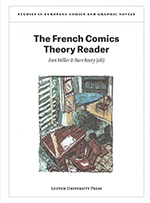
The French Comics Theory Reader
Ann Miller und Bart Beaty (Hg.) Leuven University Press 334 Seiten ISBN: 978-9-0586-7988-8 ~€ 59,- Juli 2014 Verlagsseite Key French-language theoretical texts on comics translated into English for the first time. The French Comics Theory Reader presents a collection of key theoretical texts on comics, spanning a period from the 1960s to the 2010s, written in French and never before translated into English. The publication brings a distinctive set of authors together uniting theoretical scholars, artists, journalists, and comics critics. Readers will gain access to important debates that have taken place among major French-language comics scholars, including Thierry Groensteen, Benoît Peeters, Jan Baetens, and Pierre Fresnault-Deruelle, over the past fifty years. The collection covers a broad range of approaches to the medium, including historical, formal, sociological, philosophical, and psychoanalytic. A general introduction provides an overall context, and, in addition, each of the four thematic sections is prefaced by a brief summary of each text and an explanation of how they have influenced later work. The translations are faithful to the originals while reading clearly in English, and, where necessary, cultural references are clarified. 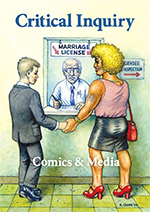
Comics & Media: A Special Issue of „Critical Inquiry“
Hillary L. Chute und Patrick Jagoda (Hg.) University of Chicago Press Journals 272 Seiten ISBN: 978-0-2262-0846-6 ~$ 30,- Juli 2014 Verlagsseite The past decade has seen the medium of comics reach unprecedented heights of critical acclaim and commercial success. Comics & Media reflects that, bringing together an amazing array of contributors–creators and critics alike–to discuss the state, future, and potential of the medium. Loaded with full-color reproductions of work by such legends as R. Crumb, Art Spiegelman, Alison Bechdel, Chris Ware, Daniel Clowes, and Lynda Barry, the book addresses the place of comics in both a contemporary and historical context. Essays by such high-profile figures as Tom Gunning, N. Katherine Hayles, Patrick Jagoda, and W. J. T. Mitchell address a stunning range of topics, including the place of comics in the history of aesthetics, changes to popular art forms, digital humanities, and ongoing tensions between new and old media. The result is a substantial step forward for our understanding of what comics are and can be, and the growing place they hold in our culture. Zu vier weiteren Neuerscheinungen
 Webcomic im Fokus I – Dokumentation der Veranstaltung ist ab sofort als 60seitige Pdf-Mappe frei im Netz verfügbar. Seit 2013 präsentiert sich die Comic Solidarity als Dach für zahlreiche online publizierende Comicschaffende. Die auf dem Comic-Salon 2014 ausgetragene Veranstaltungreihe aus Gesprächsrunden, Impulsvorträgen, Lesungen und Präsentationen – „Webcomic im Fokus“ – strebte eine pragmatische Bestandsaufnahme des deutschen Webcomic-Bereichs an, um gemeinsam mit KünstlerInnen, ComicforscherInnen, JournalistInnen und Fans die Frage zu diskutieren: Welche neuen Impulse sind aus dem Bereich Online-Publishing für grafisches Erzählen zu erwarten?
Webcomic im Fokus I – Dokumentation der Veranstaltung ist ab sofort als 60seitige Pdf-Mappe frei im Netz verfügbar. Seit 2013 präsentiert sich die Comic Solidarity als Dach für zahlreiche online publizierende Comicschaffende. Die auf dem Comic-Salon 2014 ausgetragene Veranstaltungreihe aus Gesprächsrunden, Impulsvorträgen, Lesungen und Präsentationen – „Webcomic im Fokus“ – strebte eine pragmatische Bestandsaufnahme des deutschen Webcomic-Bereichs an, um gemeinsam mit KünstlerInnen, ComicforscherInnen, JournalistInnen und Fans die Frage zu diskutieren: Welche neuen Impulse sind aus dem Bereich Online-Publishing für grafisches Erzählen zu erwarten?